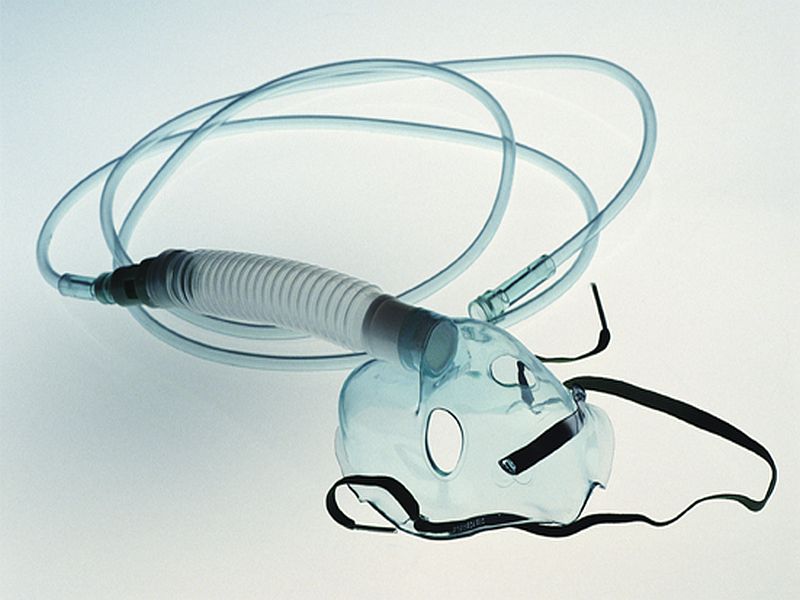TUESDAY, March 5, 2019 (HealthDay News) — A new guideline, published Feb. 15 in the Journal of Clinical Sleep Medicine, establishes clinical practice recommendations for positive airway pressure (PAP) treatment of obstructive sleep apnea (OSA) in adults.
Susheel P. Patil, M.D., Ph.D., from Johns Hopkins University in Baltimore, and colleagues on the American Academy of Sleep Medicine task force conducted a systematic literature review and assessed the evidence to inform the recommendations based on expert consensus.
The authors strongly recommend that PAP, rather than no therapy, is used to treat OSA in adults with excessive sleepiness; that PAP therapy is initiated using either auto-adjusting PAP at home or in-laboratory PAP titration in adults with OSA and no significant comorbidities; and that clinicians use either continuous PAP or auto-adjusting PAP for ongoing treatment of OSA in adults. The authors also strongly recommend that educational interventions be given with initiation of PAP therapy in adults with OSA. Conditional recommendations include that behavioral and/or troubleshooting interventions as well as telemonitoring-guided interventions be used during the initial period of PAP therapy in adults with OSA.
“We hope the guideline provides the rationale for providers, health systems, and payors to establish programs that promote early and sustained adherence to PAP therapy for the benefit of patients experiencing the consequences of obstructive sleep apnea,” Patil said in a statement.
One author receives royalties from patents held on some PAP devices; another author disclosed financial ties to Bayer Pharmaceuticals.
Copyright © 2019 HealthDay. All rights reserved.

Good Practice Statements
The following good practice statements are based on expert consensus, and their implementation is necessary for appropriate and effective management of patients with OSA treated with positive airway pressure:
-
Treatment of OSA with PAP therapy should be based on a diagnosis of OSA established using objective sleep apnea testing.
-
Adequate follow-up, including troubleshooting and monitoring of objective efficacy and usage data to ensure adequate treatment and adherence, should occur following PAP therapy initiation and during treatment of OSA.
Recommendations
The following recommendations are intended as a guide for clinicians using PAP to treat OSA in adults. A STRONG (ie, “We recommend…”) recommendation is one that clinicians should follow under most circumstances. A CONDITIONAL recommendation (ie, “We suggest…”) reflects a lower degree of certainty regarding the outcome and appropriateness of the patient-care strategy for all patients. The ultimate judgment regarding any specific care must be made by the treating clinician and the patient, taking into consideration the individual circumstances of the patient, available treatment options, and resources.
-
We recommend that clinicians use PAP, compared to no therapy, to treat OSA in adults with excessive sleepiness. (STRONG)
-
We suggest that clinicians use PAP, compared to no therapy, to treat OSA in adults with impaired sleep-related quality of life. (CONDITIONAL)
-
We suggest that clinicians use PAP, compared to no therapy, to treat OSA in adults with comorbid hypertension. (CONDITIONAL)
-
We recommend that PAP therapy be initiated using either APAP at home or in-laboratory PAP titration in adults with OSA and no significant comorbidities. (STRONG)
-
We recommend that clinicians use either CPAP or APAP for ongoing treatment of OSA in adults. (STRONG)
-
We suggest that clinicians use CPAP or APAP over BPAP in the routine treatment of OSA in adults. (CONDITIONAL)
-
We recommend that educational interventions be given with initiation of PAP therapy in adults with OSA. (STRONG)
-
We suggest that behavioral and/or troubleshooting interventions be given during the initial period of PAP therapy in adults with OSA. (CONDITIONAL)
-
We suggest that clinicians use telemonitoring-guided interventions during the initial period of PAP therapy in adults with OSA. (CONDITIONAL)


